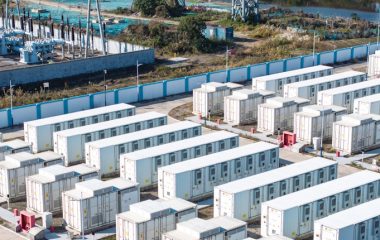
Photo: iStock
Green hydrogen will break even with fossil alternatives between 2028 and 2032 based on renewable energy potential in Romania, according to a study produced by Bucharest-based energy and climate think-tank Energy Policy Group (EPG).
Romania would need to install from 1,470 MW to 2,350 MW of electrolyser capacity accompanied with 3-4.5 GW of new renewables by 2030 to achieve the target for hydrogen use envisaged by the EU Fit-for-55 package.
Romanian authorities said the national hydrogen strategy would be published in 2022. The document contains information on costs, carbon intensity, and availability. The authors argue the government needs to focus on clean hydrogen and prioritise large-scale investments in renewable and electrolyser capacities.
The study reads that it would make it fully compliant with the EU Hydrogen Strategy and Fit-for-55 package.
According to the document’s authors, there is still a cost gap between fossil-based and clean hydrogen. However, electrolyser capital expenditure (CAPEX) is expected to decrease from EUR 1,060/kW to EUR 375/kW for polymer electrolyte membrane electrolyzers (PEM), and as low as EUR 100/kW for alkaline electrolyzers.
Between 1,470 MW and 2,350 MW of electrolyser capacity will need to be installed in Romania by 2030
“By 2030, producing clean hydrogen will no longer be a capex-intensive business. The price of renewable energy becomes the main cost component, especially at medium to high electrolyser load factors. Coupled with the decreasing cost of renewable energy, higher carbon price, and elimination of free allocation of CO2 allowances, this will allow clean hydrogen to break even with fossil alternatives between 2028 and 2032 based on local renewable potential,” the study reads.
Two modelling scenarios analysed in this report, based on the Fit-for-55 package proposals regarding the use of clean hydrogen in industry and transport, show that between 1,470 MW and 2,350 MW of electrolyser capacity will need to be installed in Romania by 2030.
It translates to 3.7% and 6%, respectively, of the EU electrolyser capacity by 2030, targeted in the European Commission’s Hydrogen Strategy. When factoring in the additionality principle, it requires between 3 and 4.5 GW of renewables to be installed on top of the capacities included in the current National Energy and Climate Plan, the report reads.
The levelized cost of hydrogen could drop to EUR 1.38/kgH2
The study has calculated the levelized cost of hydrogen (LCOH) based on an electricity price of EUR 50/MWh, which is according to authors a reasonable if not conservative assumption for Romania in 2030, the renewables potential and expected cost reductions. The LCOH for alkaline electrolysis is between EUR 2.21/kgH2 and EUR 2.3/kgH2, while for PEM electrolysis it ranges from EUR 2.34 to EUR 2.73/ kgH2, depending on load factor.
Power purchase agreements are crucial for low-cost electricity for electrolysis units
According to the study, the LCOH can go down to EUR 1.38/kgH2 for alkaline electrolysis and EUR 1.59/ kgH2 for PEM electrolysis in 2030 at an electricity price of EUR 25/MWh.
Long-term power purchase agreements (PPAs) with multiple RES producers, or wholesale purchasing of electricity that comes with guarantees of origin (GOs) are the only way of ensuring a stable and predictable source of low-cost electricity for electrolysis units.


















Be the first one to comment on this article.